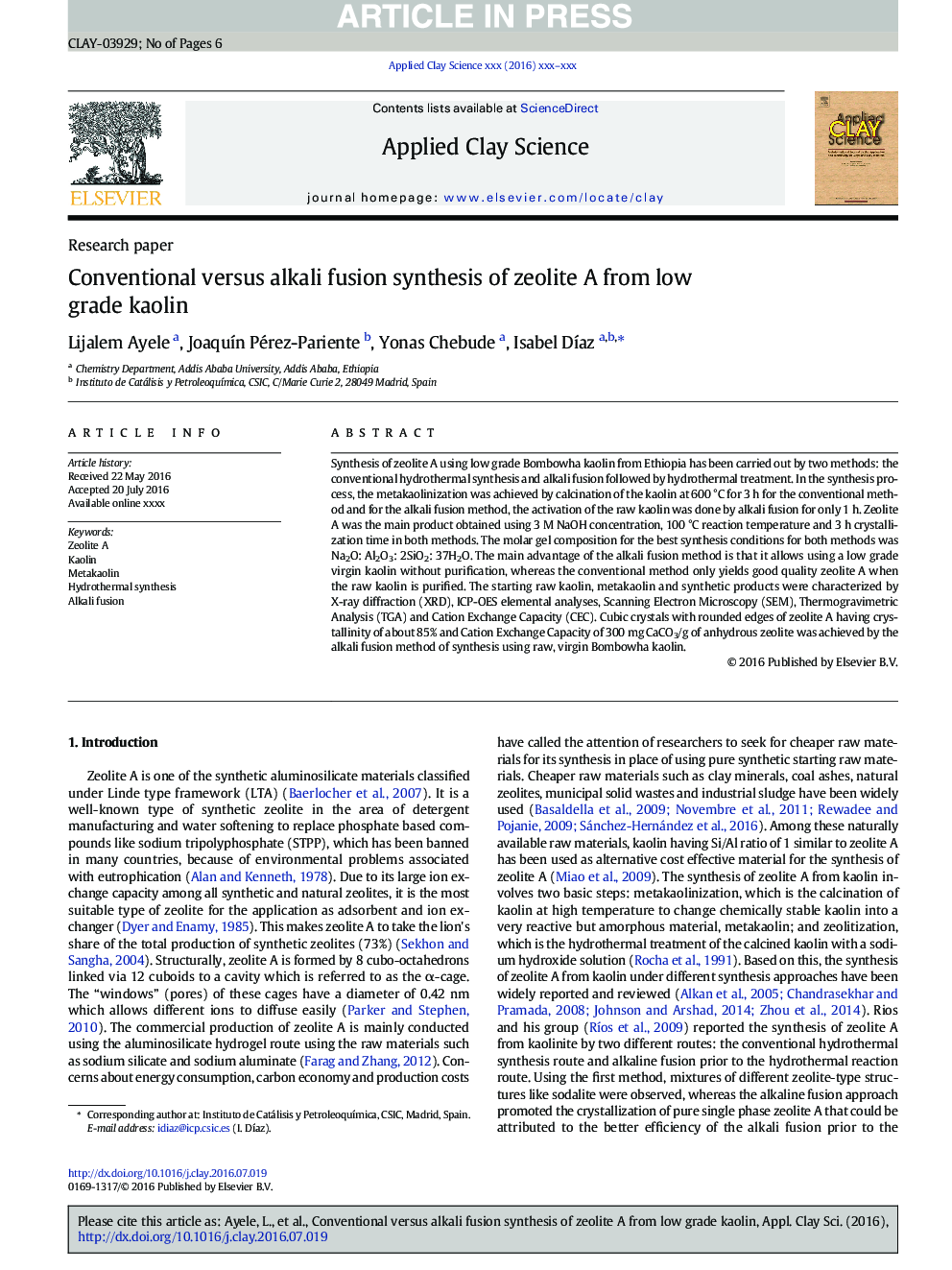| Article ID | Journal | Published Year | Pages | File Type |
|---|---|---|---|---|
| 5468781 | Applied Clay Science | 2016 | 6 Pages |
Abstract
Synthesis of zeolite A using low grade Bombowha kaolin from Ethiopia has been carried out by two methods: the conventional hydrothermal synthesis and alkali fusion followed by hydrothermal treatment. In the synthesis process, the metakaolinization was achieved by calcination of the kaolin at 600 °C for 3 h for the conventional method and for the alkali fusion method, the activation of the raw kaolin was done by alkali fusion for only 1 h. Zeolite A was the main product obtained using 3 M NaOH concentration, 100 °C reaction temperature and 3 h crystallization time in both methods. The molar gel composition for the best synthesis conditions for both methods was Na2O: Al2O3: 2SiO2: 37H2O. The main advantage of the alkali fusion method is that it allows using a low grade virgin kaolin without purification, whereas the conventional method only yields good quality zeolite A when the raw kaolin is purified. The starting raw kaolin, metakaolin and synthetic products were characterized by X-ray diffraction (XRD), ICP-OES elemental analyses, Scanning Electron Microscopy (SEM), Thermogravimetric Analysis (TGA) and Cation Exchange Capacity (CEC). Cubic crystals with rounded edges of zeolite A having crystallinity of about 85% and Cation Exchange Capacity of 300 mg CaCO3/g of anhydrous zeolite was achieved by the alkali fusion method of synthesis using raw, virgin Bombowha kaolin.
Related Topics
Physical Sciences and Engineering
Earth and Planetary Sciences
Geochemistry and Petrology
Authors
Lijalem Ayele, JoaquÃn Pérez-Pariente, Yonas Chebude, Isabel DÃaz,
